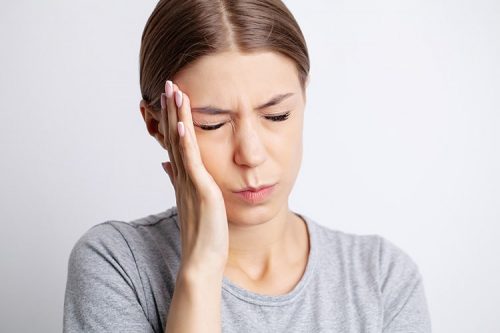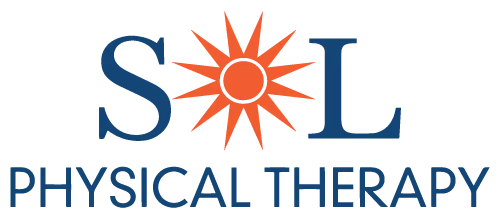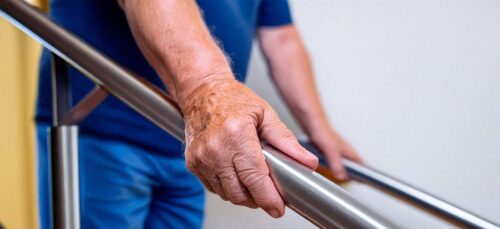
Savannah Carlson, PT, DPT
Orthopedic & TMJ Specialist
Do you suffer from frequent headaches, jaw tension, or neck stiffness? These symptoms might seem unrelated, but they’re often linked — with the root cause hiding in a commonly overlooked joint: the temporomandibular joint (TMJ).
In this post, we’ll explore how headaches, TMJ disorders, and neck pain are connected, what causes the cycle of pain, and how you can find relief.
What is the TMJ?
The temporomandibular joint (TMJ) connects your jawbone to your skull, located just in front of your ears. It allows you to speak, chew, and move your jaw. TMJ disorders (also called TMD) occur when this joint becomes inflamed, misaligned, or overused.
Common TMJ symptoms include:
- Jaw pain or clicking
- Difficulty chewing
- Earaches or ringing in the ears
- Locking of the jaw
- Headaches and facial pain

The Link Between TMJ, Neck Pain, and Headaches
1. Shared Muscles and Nerves
2. Posture and Muscle Strain
Poor posture, especially forward head posture (common with smartphone or computer use), puts strain on the neck and jaw. This can lead to misalignment and overcompensation in nearby muscles, contributing to both tension headaches and TMJ dysfunction.

3. Trigger Points and Referred Pain
Muscle knots in the neck and jaw can cause referred pain, where discomfort is felt in a different part of the body. For example, tightness in the neck or shoulders can manifest as a dull headache behind the eyes or at the base of the skull.
Types of Headaches Commonly Associated with TMJ and Neck Issues
- Tension Headaches: Dull, aching pain around the forehead or temples, often from muscle strain.
- Cervicogenic Headaches: Originating from the neck, these headaches often radiate from the back of the head toward the front.
- Masticatory myofascial pain and headache: This type of headache originates from trigger points in the muscles involved in chewing, such as the masseter, temporalis, and medial pterygoid muscles. Pain can radiate from the jaw to the temples, forehead, or even behind the eyes. It’s often linked to teeth grinding, jaw clenching, or overuse of the jaw muscles.
- Migraine-Like Headaches: TMJ disorders can trigger migraines or migraine-like symptoms in sensitive individuals.

How Can Physical Therapy Help?
Physical therapy is one of the most effective, non-invasive approaches for managing headaches related to TMJ dysfunction and neck pain. A skilled physical therapist can assess the underlying biomechanical issues in your jaw, neck, and posture — and develop a personalized treatment plan that addresses both the symptoms and their root causes.
Here’s how physical therapy can help relieve TMJ-related headaches:
1. Manual Therapy for Jaw and Neck
- Trigger Point Release: Manual pressure applied to tight, overactive muscles in the neck and jaw can reduce referred pain and improve muscle function.
- Soft Tissue Mobilization: Gentle manipulation of the muscles and fascia to reduce tension and improve circulation.
- Joint Mobilizations: Specific hands-on techniques to improve mobility in the cervical spine and TMJ itself.
- Stretching Techniques: Targeted stretches to relieve tension in the jaw, neck, and upper shoulders.
2. Corrective Exercises
- Neck Strengthening and Stability Exercises: Designed to support the cervical spine and reduce overcompensation by surrounding muscles.
- Postural Training: Exercises and cues to correct forward head posture, rounded shoulders, and other contributing imbalances.
- Jaw Control and Relaxation Exercises: Gentle movements and neuromuscular retraining to improve TMJ alignment and decrease clenching or bracing habits.
3. Advanced Techniques for Pain Relief
- Dry Needling: Insertion of fine needles into myofascial trigger points to release deep muscle tension, especially effective for the masseter, temporalis, and cervical paraspinals.
- Cupping Therapy: Helps release fascial restrictions, improve blood flow, and decrease muscle tightness in the jaw and neck areas.
- Cervical Traction: Manual or mechanical traction may be used to gently decompress the cervical spine, alleviating nerve irritation and muscle tension contributing to headaches.
4. Education and Self-Management
Physical therapists also empower patients with the knowledge and tools to manage symptoms at home. This includes:
- Posture tips for work and sleep
- Jaw relaxation techniques
- Self-massage strategies
- Ergonomic adjustments for daily activities
When combined, these techniques not only relieve pain but also improve function, reduce headache frequency, and prevent future flare-ups. Several of our clinics offer specialized TMJ therapy—contact us today to get scheduled with one of our TMJ specialists. Working with a physical therapist trained in head, neck, and jaw rehabilitation can make a significant difference in your quality of life.

Savannah Carlson, PT, DPT
Savannah is an expert in the evaluation and treatment of orthopedic and sports-related injuries, specializing in rehabilitation of both upper and lower extremities, as well as the spinal region. She is dedicated to facilitating optimal recovery and guiding patients through their return to sports or work. In addition, Savannah offers specialized care in the treatment of Temporomandibular Joint (TMJ) disorders, providing comprehensive strategies for alleviating discomfort and restoring function.




